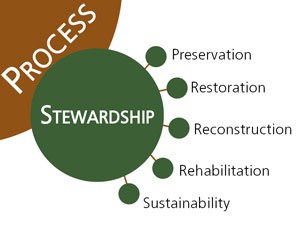
General Treatment
This section contains NPS management standards that provide a broad philosophical base for the treatment of cultural landscapes. Treatment is traditionally divided into four categories: preservation, rehabilitation, restoration, and reconstruction. The standards should be used in evaluating proposed projects and in planning and executing all work.
The following standards apply to all treatments:
- Land use activities, whether historic or introduced, should not impair archeological resources.
- Uses addressing programmatic needs or park facilities within a cultural landscape, such as visitor centers, parking, interpretive structures, housing, administrative facilities, maintenance yards, and storage areas, are carefully considered in the context of the significance of the landscape.
- Use is monitored and regulated to minimize both immediate and long-term damage.
- Contemporary facilities do not adversely impact the landscape's historic character. New facilities are compatible with the historic character and material of the landscape.
- Contemporary structures to facilitate access, such as ramps, railings, signs, and curb cuts, are designed and located to minimize adverse impacts on the character and features of a cultural landscape.
- Access to a cultural landscape that is vulnerable to damage from human use is limited, monitored, or controlled.
- All treatment and use decisions reflect consideration of effects on both the natural and built features of a cultural landscape and the dynamics inherent in natural processes and continued use.
- Use of destructive techniques, such as archeological excavation, is limited to providing sufficient information for research, interpretation, and management needs.
- All work that may affect cultural landscapes is evaluated by a historical landscape architect and other professionals, as appropriate.
- All modification, repair, or replacement of materials and features is preceded by sufficient study and recording to protect research and interpretive values.
- New work, materials, and replacement features are identified, documented, or permanently marked in an unobtrusive manner to distinguish them from original work, materials, and features.
- A proposed treatment project is initiated by the appropriate programming document, including a scope of work and cost estimate from a CLR or FMSS. Such projects include preservation maintenance as well as major treatment. No treatment is undertaken without an approved CLR or work procedure specifying the work, and Section 106 compliance.
- A treatment project is directed by a historical landscape architect and performed by qualified technicians.
- Representative features salvaged from a cultural landscape are accessioned and cataloged, provided that they fall within the park's scope of collection statement.
- All changes made during treatment are graphically documented with drawings and photographs. Records of treatment are managed as archival materials by a curator or archivist within the park's museum collection.
- Work on historic structures, including modifications to improve drainage and access, does not harm the characteristics and features of a cultural landscape.
Preservation
Preservation maintains the existing integrity and character of a cultural landscape by arresting or retarding the deterioration caused by natural forces and normal use. It includes both maintenance and stabilization. Maintenance is a systematic activity mitigating wear and deterioration of a cultural landscape by protecting its condition. In light of the dynamic qualities of a landscape, maintenance is essential for the long-term preservation of individual features and the integrity of the entire landscape. Stabilization involves reestablishing the stability of an unsafe, damaged, or deteriorated cultural landscape while maintaining its existing character.
The following standards based on the Secretary of the Interior's Standards for the Treatment of Historic Properties apply:
- A cultural landscape is used as it was historically, or is given a new or adaptive use that maximizes the retention of historic materials, features, spaces, and spatial relationships. Where a treatment and use have not been identified, a landscape is protected and, if necessary, stabilized until additional work may be undertaken.
- The historic character of a cultural landscape is retained and preserved. The replacement or removal of intact or repairable historic materials or alteration of features, spaces, and spatial relationships that characterize a landscape is avoided.
- Each cultural landscape is recognized as a physical record of its time, place, and use. Work needed to stabilize, consolidate, and conserve historic materials and features is physically and visually compatible, identifiable upon close inspection, and properly documented for future research.
- Changes to a cultural landscape that have acquired historical significance in their own right are retained and preserved.
- Historic materials, features, finishes, and construction techniques or examples of craftsmanship that characterize a cultural landscape are preserved.
- The existing condition of historic features is evaluated to determine the appropriate level of intervention needed. Where the severity of deterioration requires repair or limited replacement of a historic feature, the new work matches the old in design, color, texture, and where possible, materials. Repair or replacement of features is substantiated by archeological, documentary, or physical evidence.
- Chemical or physical treatments that cause damage to historic materials are not used.
- Archeological and structural resources are protected and preserved in place. If such resources must be disturbed, mitigation measures are undertaken including recovery, curation, and documentation.
The following additional standards apply:
- Stabilization detracts as little as possible from a cultural landscape's appearance and significance. Reinforcement is concealed wherever possible so as not to intrude upon or detract from the aesthetic, historical, or archeological quality of the landscape, except where concealment would result in the alteration or destruction of historically or archeologically significant features, materials, or physical or visual relationships. Accurate documentation of stabilization procedures is kept and made available for future needs.
- Maintenance is executed by qualified technicians in accordance with approved work procedures. Where such procedures are nonexistent or incomplete, a historical landscape architect or appropriate cultural resource specialist provides technical guidance.
- All features of the cultural landscape are inspected on a scheduled basis and information about their condition is entered into FMSS.
Rehabilitation
Rehabilitation improves the utility or function of a cultural landscape, through repair or alteration, to make possible an efficient compatible use while preserving those portions or features that are important in defining its significance.
The following standards based on the Secretary of the Interior's Standards for the Treatment of Historic Properties apply:
- A cultural landscape is used as it was historically or is given a new or adaptive use that maximizes the retention of historic materials, features, spaces, and spatial relationships.
- The historic character of a cultural landscape is retained and preserved. The replacement or removal of intact or repairable historic materials or alteration of features, spaces, and spatial relationships that characterize a landscape is avoided.
- Each cultural landscape is recognized as a physical record of its time, place, and use. Changes that create a false sense of historical development, such as adding conjectural features from other landscapes, are not undertaken. Work needed to stabilize, consolidate, and conserve historic materials and features is physically and visually compatible, identifiable upon close inspection, and properly documented for future research.
- Changes to a cultural landscape that have acquired historical significance in their own right are retained and preserved.
- Historic materials, features, finishes, and construction techniques or examples of craftsmanship that characterize a cultural landscape are preserved.
- Deteriorated historic features are repaired rather than replaced. Where the severity of deterioration requires repair or replacement of a historic feature, the new feature matches the old in design, color, texture, and, where possible, materials. Repair or replacement of missing features is substantiated by archeological, documentary, or physical evidence.
- Chemical or physical treatments that cause damage to historic materials are not used.
- Archeological and structural resources are protected and preserved in place. If such resources must be disturbed, mitigation measures are undertaken including recovery, curation, and documentation.
- Additions, alterations, or related new construction do not destroy historic materials, features, and spatial relationships that characterize the cultural landscape. New work is differentiated from the old and is compatible with the historic materials, features, size, scale and proportion, and massing of the landscape.
- Additions and adjacent or related new construction are undertaken in such a manner that if removed in the future, the essential form and integrity of the cultural landscape would be unimpaired.
- Reinforcements required for stability of existing support systems and protective or code-required features (electrical, security, fire protection, handicapped accessibility, etc.) are concealed whenever possible so as not to intrude upon or detract from a cultural landscape's aesthetic and historical qualities, except where concealment would result in the alteration or destruction of historically significant features, materials, or physical or visual relationships.
Restoration
Restoration accurately depicts the form, features, and character of a cultural landscape as it appeared at a specific period or as intended by its original constructed design. It may involve the reconstruction of missing historic features and selective removal of later features, some having cultural value in themselves.
The following standards based on the Secretary of the Interior's Standards for the Treatment of Historic Properties apply:
- A cultural landscape is used as it was historically or given a new or adaptive use that interprets the landscape and its restoration period.
- Materials and features from the restoration period are retained and preserved. The removal of materials or alteration of features, spaces, and spatial relationships that characterize the period is not undertaken.
- Each cultural landscape is recognized as a physical record of its time, place, and use. Changes that create a false sense of historical development, such as adding conjectural features from other landscapes, are not undertaken. Work needed to stabilize, consolidate, and conserve materials and features from the restoration period is physically and visually compatible, identifiable upon close inspection, and properly documented for future research.
- Materials, features, finishes, spaces, and spatial relationships that characterize other historic periods are documented prior to their alteration or removal.
- Historic materials, features, finishes, and construction techniques or examples of craftsmanship that characterize the restoration period are preserved.
- Deteriorated features from the restoration period are repaired rather than replaced. Where the severity of deterioration requires replacement of a historic feature, the new feature matches the old in design, color, texture and, where possible, materials.
- Replacement of missing features from the restoration period is substantiated by archeological, documentary, or physical evidence. A false sense of history is not created by adding conjectural features or features from other landscapes, or by combining features that never existed together historically.
- Chemical or physical treatments that cause damage to historic materials are not used.
- Archeological and structural resources are protected and preserved in place. If such resources must be disturbed, mitigation measures are undertaken including recovery, curation, and documentation.
- Designs that were never executed historically are not constructed.
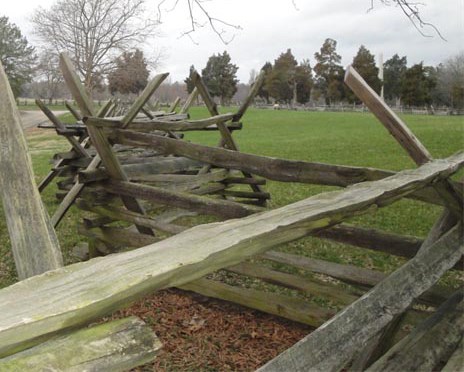
NPS Photo
The following additional standards apply:
- Archeological, documentary, or physical evidence is sufficient to permit accurate restoration with minimal conjecture.
- Restoration is essential to public understanding of the cultural associations of a landscape.
- Reinforcements required for stability of existing support systems and protective or code-required features (electrical, security, fire protection, handicapped accessibility, etc.) are concealed whenever possible so as not to intrude upon or detract from a cultural landscape's aesthetic and historical qualities, except where concealment would result in the alteration or destruction of historically significant features, materials, or physical or visual relationships.
Reconstruction
Reconstruction entails depicting the form, features, and details of a non-surviving cultural landscape, or any part thereof, as it appeared at a specific period or as intended by its original constructed design. Reconstruction of an entire landscape is always a last-resort measure for addressing a management objective and will be undertaken only upon specific written approval of the director after policy review in the Washington office.
The following standards based on the Secretary of the Interior's Standards for the Treatment of Historic Properties apply:
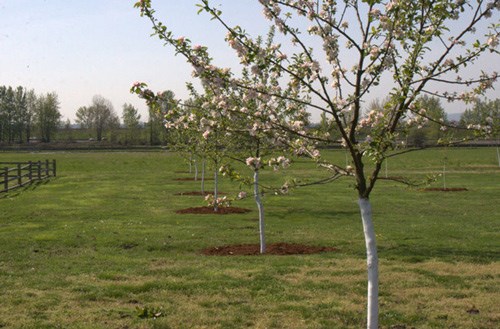
NPS Photo
- Archeological, documentary, or physical evidence is available to permit accurate reconstruction with minimal conjecture, and such reconstruction is essential to public understanding of the cultural associations of an NPS unit established for that purpose.
- Reconstruction of a cultural landscape in its historic location is preceded by a thorough archeological investigation to identify and evaluate those features and artifacts which are essential to an accurate reconstruction. Mitigation measures are undertaken including recovery, curation, and documentation.
- Reconstruction includes measures to preserve any remaining historic material, features, and spatial relationships.
- Reconstruction is based on the accurate duplication of historic features substantiated by archeological, documentary, or physical evidence, rather than on conjectural designs or the availability of different features from other landscapes. A reconstructed cultural landscape re-creates the appearance of the non-surviving landscape in design, color, texture, and, where possible, materials.
- A reconstruction is clearly identified as a contemporary re-creation.
- Designs that were never executed historically are not constructed.
The following additional standards apply:
- The reconstructed cultural landscape is full-scale and on the original site.
- The reconstruction does not simulate a damaged or ruined cultural landscape or constitute a general representation of a "typical" landscape, e.g., kitchen garden, period garden, orchard, that never existed historically.
Biotic Systems Treatment
This section contains standards addressing the special issues related to the treatment of biotic systems. Virtually all cultural landscapes evolve from and are dependent upon natural resources. In many ways, the dynamic qualities inherent in natural systems are what differentiate cultural landscapes from other cultural resources. Plant and animal communities associated with human settlement and use are considered biotic cultural resources and can reflect social, functional, economic, ornamental, or traditional uses of the land.
Within a cultural landscape, biotic cultural resources are recognized either as a system or as individual specimen features that contribute to the landscape's significance. For example, the preservation of a single tree in a historic designed landscape may be critical to the integrity of the overall design. A herd of a historic variety of livestock may have similar significance in a historic vernacular landscape. In contrast, an entire woodland may have significance, so that preserving the ecological processes of the system rather than individual trees or animals becomes paramount. In all cases, consultation with natural resource professionals is necessary to determine appropriate protection and management strategies for biotic cultural resources.
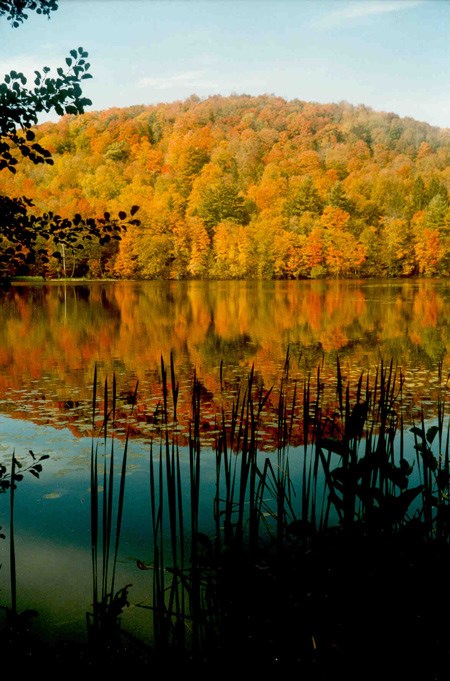
NPS Photo
General standards for managing vegetation in a cultural landscape are followed by specific standards and guidance for managing specimen plants, vegetation systems, pests, and endangered species. The following NPS management standards apply:
- Existing vegetation, both native and introduced (exotic), that contributes to the historic character of a cultural landscape or is important to a traditional user group is identified, maintained, and perpetuated, as appropriate. Special consideration is given to introduced species because they may be important clues to the history of the landscape, they may include plant varieties that are rare or endangered, or they may be mistaken as "pests" and removed.
- Maintenance methods are used that promote the health and vigor of the vegetation and respect either the natural habit of growth or the trained form of the plant material related to the historic character of a cultural landscape.
- Treatment of vegetation is based on an understanding of the functional, design, and associative values of the plant material in a cultural landscape.
Specimen Plant Management
Specimens include both individual plants and aggregations of plants that have distinct, unique, or noteworthy characteristics in a landscape such as individual trees and shrubs, ornamental plantings, perennial borders, gardens, and orchards. In some cultural landscapes, it is important that the specific types of plant materials and the location, shape, and form of these materials be retained and perpetuated based on their historic character and significant values. The primary considerations in managing specimen plants are to ensure their health and vigor and, if appropriate, provide for propagation of the next generation. Perpetuation of historic genetic material is especially important when cultivars are rare or unavailable.
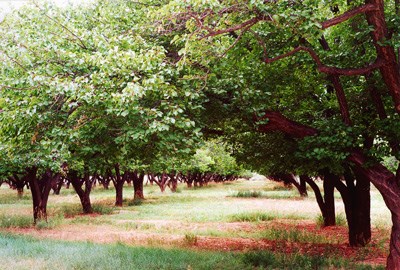
NPS Photo
- Extant historic vegetation considered significant as a specimen in a cultural landscape is identified and maintained.
- Perpetuation of historic genetic material, through propagation or other means, is undertaken when plants are rare or have important historical associations or when replacements are unavailable.
- Significant vegetation that causes damage to or threatens other resources is controlled rather than removed whenever feasible.
- Replacement of plant material matches the original in type, location, form, and shape.
- Substitution of plant material is considered in response to changes in growing conditions, susceptibility to disease and pests, or the unavailability of original material. Substitute material matches the historic material in visual, functional, and horticultural characteristics. Varieties resistant to disease, pests, and pollution are used where they meet these standards. Accurate records of substitutions are kept.
- Removal of vegetation that threatens health and safety is preceded by adequate documentation and followed by replacement if appropriate.
Vegetation Systems Management
In managing vegetation systems, the overall pattern of vegetation is the primary concern. Elements of pattern include height and general scale and the size and juxtaposition of areas with different vegetation. Exact configurations and plant species can vary as long as the overall pattern is retained. Forests, woodlands, woodlots, and most agricultural lands are examples of vegetation systems.
The following standards apply:
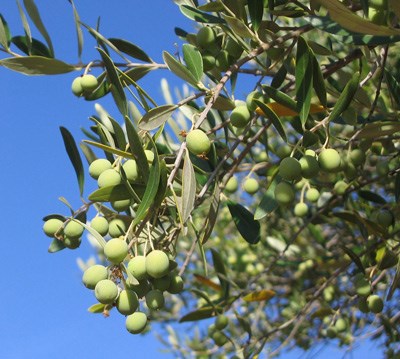
NPS Photo
- The need for succession through several stages to retain healthy communities is considered in managing forests, woodlands, and woodlots. On agricultural lands, the value of crop rotation, fallow periods, and succession into woodland is considered.
- Consideration is given to the effects of vegetation on the nutrient regime of water bodies and the stability of banks. Erosion is minimized using vegetation or other materials compatible with the historic character of the cultural landscape.
- Vegetation management activities associated with ground disturbance are monitored to ensure the protection of archeological and other cultural resources, such as the remains of roads and traces, fence lines, hedgerows, earthworks, subsurface features, and other structures.
- Areas that meet the definition of wetland generally are excluded from agricultural use. If agricultural use is allowed in wetland areas, appropriate measures are taken to monitor impacts.
- Historic exotic species are monitored and controlled to avoid spreading and disrupting desirable adjacent natural plant communities and associations. Historically inappropriate exotic species are not introduced.
- Where grazing is appropriate as part of vegetation management, grazing activities are monitored for potential impacts to biotic systems and archeological resources.
Pest Management
A pest is defined as a population of organisms that interferes with the accomplishment of management objectives. Integrated pest management (IPM) involves taking steps to prevent pest problems, monitoring to detect when a pest population reaches a predetermined threshold level considered unacceptable, and using a combination of approaches to control pests in a manner that will be most effective, safest to people, and most environmentally sound.
The following standards apply:
- Landscape management practices that contribute to pest problems are identified and alternate practices that maintain the historic character of a cultural landscape are considered.
- When appropriate, pest-resistant varieties are used to minimize pest-caused damage to features of a cultural landscape and the need for pesticides.
- All use of biocides complies with the NPS standards and procedures in the Natural Resources Management Guideline.
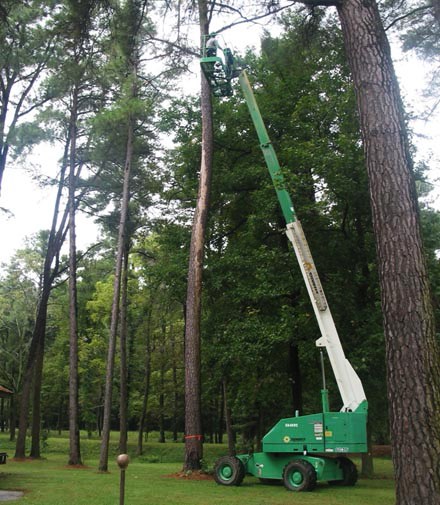
NPS Photo
Endangered Species
Federally or state-listed threatened or endangered species must receive utmost protection. They may be considered "specimens" within the cultural landscape system. (Learn more about the role of the National Park Service and its partners to protect endangered species.)
Facility Management Software System (FMSS)
FMSS, a database of the NPS Park Facility Management Program, assists in planning for the maintenance and major treatment of cultural landscapes through an inventory and condition assessment of their features. FMSS generates annual inspection forms and other reports, and develops a deferred, preventive and recurring maintenance program.
Data from completed CLIs inform the FMSS asset inventory for cultural landscapes to be managed as Maintained Landscapes and other Asset types. Stabilization needs identified in a CLI are captured in FMSS as deferred maintenance. Treatment recommendations in a CLR are captured in FMSS are deferred and recurring maintenance.
Partnerships
NPS fee ownership and occupancy of a cultural landscape provides park managers the greatest flexibility for resource management. However, when the integrity of a landscape can be maintained and long-term management objectives realized with the property held or occupied by others, acquisition of less-than-fee interests or special use agreements are considered. The following standards apply to the acquisition and control of lands containing or contributing to a cultural landscape, including adjacent lands:
Acquisition of Lands and Interests
- The fee-simple acquisition of lands is undertaken where necessary to ensure the protection of significant features and uses associated with a cultural landscape.
- The use of easements to protect a cultural landscape takes into account the economic viability of continuing their historic uses and the ability and desire of owners to continue those uses.
- Easements on agricultural lands address the protection of significant characteristics and features within a cultural landscape, such as historic roads and paths, hedgerows, fences, and specimen trees. The ability of owners to preserve and maintain such features over time is evaluated to ensure compliance.
Leases and Agreements
- Agricultural leases and agreements are managed to protect significant characteristics and features of a cultural landscape, such as topography, field size, fences, walls, ditches, vegetation, wetlands, earthworks, structures, and vistas.
- Archeological surveys are undertaken as necessary to ensure that modern farming techniques will not destroy subsurface resources.
- Modifications prompted by modern farm machinery and practices, including the alteration of historic buildings, lanes, roads, fences, and gates and the introduction of non-historic crops, field patterns, and pruning techniques, are minimized to protect significant landscape features and patterns.
- Landscape support facilities resulting from leases and agreements, such as parking areas and signs, are not allowed to diminish the integrity of a cultural landscape.
Adjacent Lands
- Adjacent lands significant to the physical, functional, or symbolic cultural landscape context of the NPS unit are identified.
- Direct impacts of adjacent land development on a park cultural landscape are identified, such as removal of woodlands; development and/or reforestation of traditionally "open" lands; alteration of historically significant field patterns; alteration of topography, streams, and watercourses impacting existing natural systems; and alteration of historic vistas.
- Indirect impacts of adjacent land development on a park cultural landscape are identified, such as increased commuter traffic on park roads, storm water runoff or restricted overland flow impacting park vegetation or generating erosion and pollution, increased pressure for the park to serve local recreational needs, higher taxes or land values rendering local agriculture unprofitable, and use of pesticides and herbicides that may negatively impact natural resources.
- Potential impacts of adjacent land development on the cultural landscape context of parks are addressed through park involvement in the planning processes of local jurisdictions.
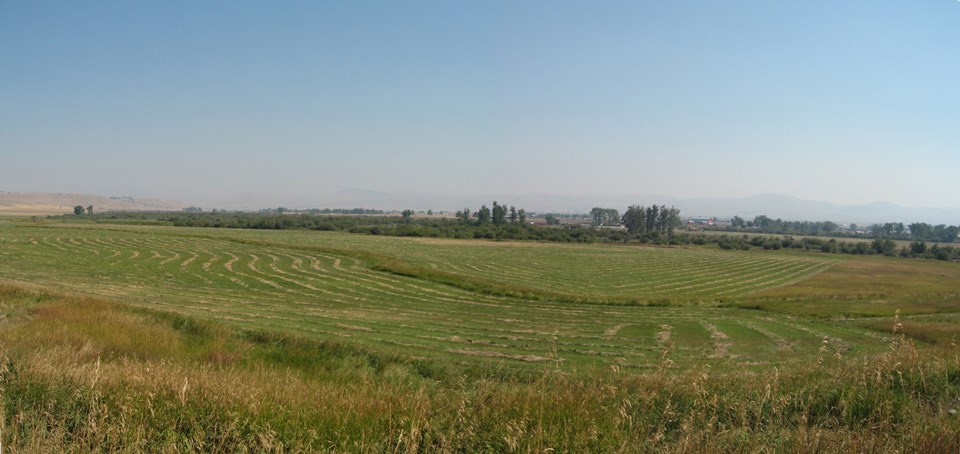
NPS Photo
Destruction or Neglect of Cultural Landscapes
No cultural landscape listed in or potentially eligible for the National Register or listed in the Cultural Landscapes Inventory is destroyed or deliberately neglected without review by cultural resource specialists and approval by the regional director. If a potentially eligible landscape has not been evaluated for the National Register, the state historic preservation officer (SHPO) is consulted. If it is determined, in consultation with the SHPO, that the landscape does not meet the National Register criteria, destruction or deliberate neglect may occur. In some cases, neglect is the appropriate action to protect archeological resources and the natural resources and processes that may have cultural or ethnographic value.
Before a landscape eligible for the National Register is destroyed or allowed to deteriorate, it is documented in accordance with Section 110(b) of the National Historic Preservation Act, and the documentation is accepted by the chief, HABS/HAER/HALS program.
Special Issues
Cemeteries
Cemeteries in parks may have significance as repositories of the remains of individuals having local, state, or national importance; as places associated with historic events or figures not interred therein (e.g., Gettysburg National Cemetery for its association with Abraham Lincoln); or, because of individual structures of high artistic or architectural merit. In addition, some cemeteries are significant cultural landscapes because they represent a type of burial ground (family), because they typify a broad social movement or pattern (the slave burial ground), or because in plan and execution they were seminal designs (early examples of the "rural" cemetery movement) or works of important designers.
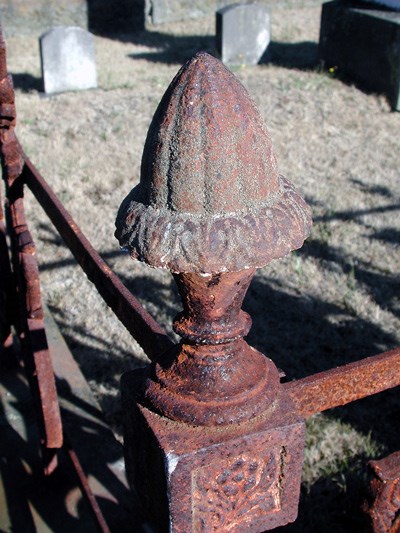
NPS Photo
- The cemetery is managed in a manner that recognizes its significance and preserves and interprets the cultural landscape as a whole. The characteristics and features of the cemetery, such as general organization and layout, plant materials, roads and pathways, fences, and the placement of statuary and grave markers, are documented and incorporated in a maintenance program.
- Maintenance activities do not impair the significant character and individual features of the cultural landscape. Mowing, weed whipping, and use of commercial herbicides immediately next to grave markers are avoided.
- The repair, cleaning, consolidation, and resetting of grave markers are supervised by a historical architect and other professionals, as appropriate.
- New landscape features are compatible with the original design and character of the cemetery and do not negatively impact the significant built or natural features (e.g., new trees are planted so that roots will not later damage or disrupt grave markers and curbing).
Circulation Systems
In many parks, the roads, parkways, and trails are significant historic circulation systems. A circulation system may constitute a cultural landscape in and of itself, such as Going-to-the-Sun Road in Glacier National Park, or it may be an integral feature of a cultural landscape. Key features of circulation systems, such as topography, bridges, headwalls, retaining walls, culverts, and views, are important to defining the overall character of the landscape.
The following standards apply:
- Historically significant circulation systems and their associated features are not adversely impacted to accommodate recreational vehicles, buses, commuter traffic, or other contemporary uses.
- Plans for the treatment of structural features that are parts of historically significant circulation systems are developed in consultation with a historical landscape architect.
- Historic circulation systems are rehabilitated to accommodate health and safety codes in ways that minimize impact on landscape characteristics and features.

NPS Photo
Earthworks
Earthworks are linear or geometric landscape structures built for military, industrial, agricultural, ceremonial, or aesthetic purposes. They include fortifications, water impoundment and control structures, early field boundary ditches and berms, burial mounds, grass garden ramps, and raised beds. Because of their composition, earthworks are constantly being impacted by a variety of natural forces. The long-term preservation of earthworks commonly requires an appropriate vegetative cover that may differ from the historic material.
The following standards apply:
- Earthworks are maintained with a healthy, vigorous vegetation cover to minimize erosion and loss of integrity.
- Circulation and visitor use facilities are located and controlled to avoid impacting earthworks.
Monuments, Memorials, and Landscape Remnants
Monuments and memorials are defined as structures and included in the List of Classified Structures. They are often significant components of cultural landscapes and may be cultural landscapes in their own right. The siting, orientation, plantings, paving materials, roads, and pathways designed as an integral part of a monument or memorial should be considered part of the feature and managed as a whole. In addition, remnant objects may have cultural value as landscape features. Their treatment should be developed in collaboration with a historical architect or curator.
At battlefields and other military sites, artillery pieces need to be evaluated in terms of their relationship to the historic landscape. A piece of ordnance may be part of a planned memorial design and significant as a structural feature of the landscape or it may be strictly an interpretive device without site-specific significance. If the ordnance is fixed in position, it is defined as a structure; if it is not fixed, it is defined as a museum object and may be part of the museum collection. In both cases, the relocation of artillery pieces should be evaluated based on their significance in the context of the overall design of the historic landscape.
Resources
- Guide to Preservation Maintenance Plans
- Landscape Line 4: Historic Plant Material Sources
- Landscape Line 12: Treatment of Plant Features
- Preservation Brief 15: Preservation of Historic Concrete
- Preservation Brief 22: The Preservation and Repair of Historic Stucco
- Preservation Brief 25: The Preservation of Historic Signs
- Preservation Brief 27: The Maintenance and Repair of Cast Iron
- Preservation Brief 38: Removing Graffiti from Historic Masonry
- Preservation Brief 42: The Maintenance, Repair, and Replacement of Historic Cast Stone
- Preservation Tech Notes: Restoring Vine Coverage to Historic Buildings
Last updated: May 19, 2020




